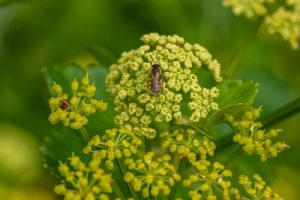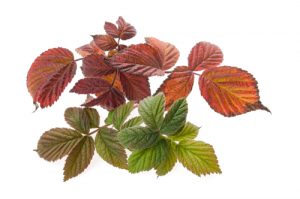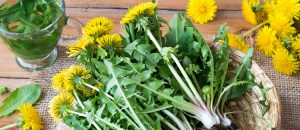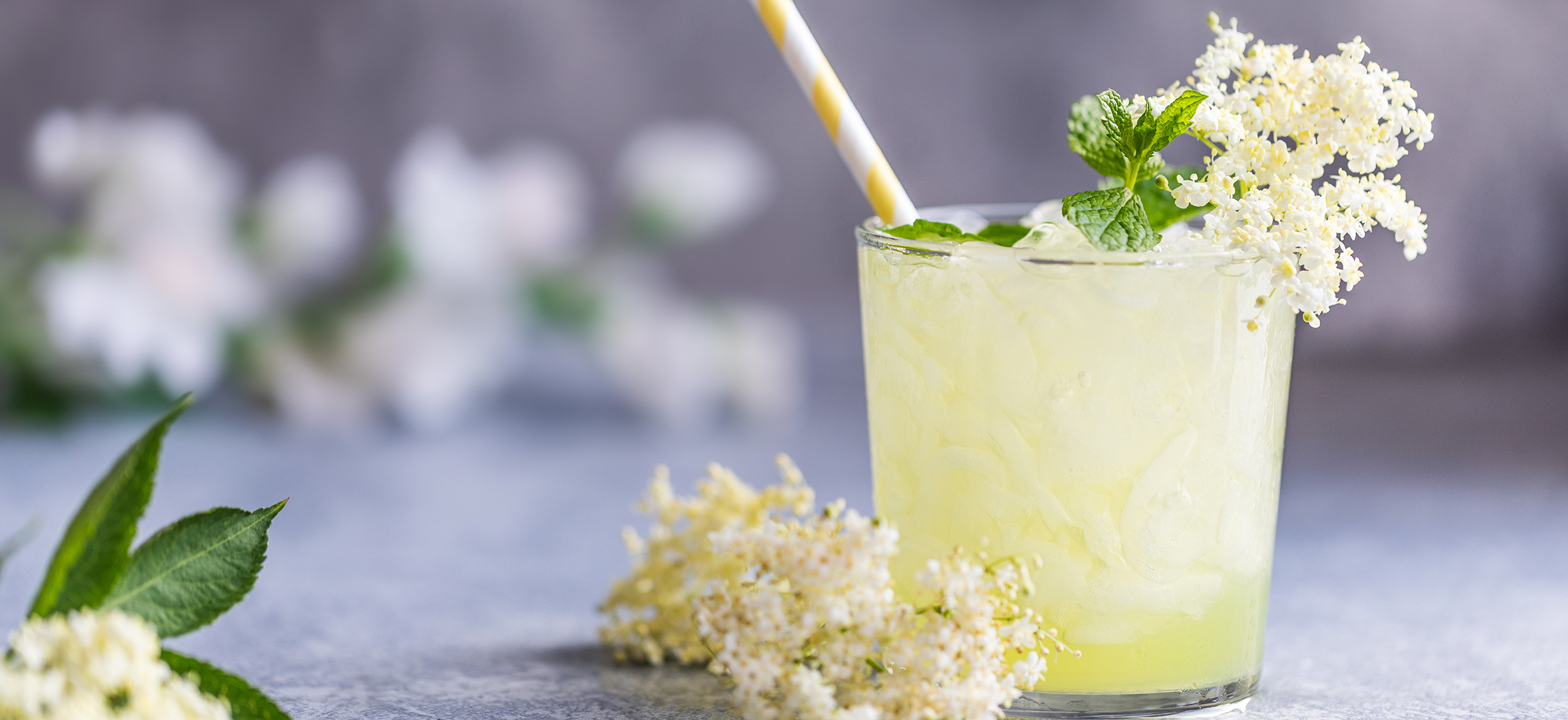As the weather warms and magnolia trees and hyacinths erupt into bloom, many of us feel encouraged to go outside and explore what our wild green spaces have to offer.
But not only do native plants provide bursts of colour and fragrance, but many of them have also been used in recipes for their health benefits for centuries!
Plants to look out for across the UK this Spring:
Wild Garlic
Identifiable characteristics:
Wild Garlic has such a distinctive odour that it is very difficult to confuse it with any other plant. This and its high frequency makes it an ideal plant to forage. With its broad swordlike leaves and globe shaped clusters of flowers, it is the ideal foraging plant for beginners.
Where to find it:
Wild Garlic grows in clusters across woodland throughout England and Wales, although is less common in Scotland. It prefers slightly shady environments, and is especially prevalent in damp areas with heavy tree coverage or close to streams.
How can it be used?
In the past, wild garlic was thought to be effective at warding away evil spirits, especially vampires. And although the mythology surrounding this plant has waned significantly over the years, its popularity has not. This native garlic has a more mellow taste when compared to its domesticated cousin, and its edible flowers and leaves are an ideal addition to spring vegetable soups, diced and added to salads, sauces, omelettes, or any other dish you would use chives or regular garlic.
Stinging Nettles
Identifiable characteristics:
Nettles have arrow shaped serrated leaves with tiny stinging hairs present on the underside. Its stalks are thick and sturdy and range in colour from yellow-green to purply-red. Its most distinctive characteristic is of course its sting, so gloves will be necessary for harvesting the top five leaves (the youngest and most tender).
Where to find it:
Prolific growers, Nettles are found nationwide in a huge array of environments ranging from hedgerows and country lanes to waste grounds and woodland.
How can it be used?
Nettles are rich in vitamins A, C, and K, as well as Magnesium, Iron, Potassium and Calcium. Having been used in a medicinal capacity for millenia, studies have found Nettles to have beneficial effects on blood pressure, inflammation, and hay fever symptoms. Nettles make the perfect substitute for spinach in meals and salads, as they even have a similar taste. But it can also be brewed into a tea, stirred into soups, and when salted and baked you can make Nettle crisps. If you have the time, they can be boiled and fermented into a beverage.
Elderflower
Identifiable characteristics:
Blooming from May to late June, this versatile cream-white flower grows in frothy clusters sitting atop red stems. Often smelt before it’s seen, Elderflower has a creamy and sweet scent.
Where to find it:
Commonly found in sunny meadows, wetlands, hedgerows, and damp fields. They prefer direct sunlight and a more moisture rich soil. Elderflower grows nationwide, but is more common in rural environments.
How can it be used?
Used most often in beverages, imbued in squashes and champagne, but the best way to use it is to steep the flowers in sugar syrup to make cordial. In cordial form, you can condense the distinctive taste of Elderflower into ice creams, jellies, and sauces. The flowers can also be cooked in the form of fritters, or deep fried in their entirety for use as a garnish or snack.
Horse Parsley
Identifiable characteristics:
 Not to be confused with its toxic relative Hemlock, Horse Parsley (or Alexanders) is a tall plant with a thick stem reminiscent of celery. The bluntly serrated leaves grow in clusters of three, and are a yellow green when juvenile, darkening as they mature. Horse Parsley has rounded globes (known as umbels) of yellow-white flowers that bloom from March through to June.
Not to be confused with its toxic relative Hemlock, Horse Parsley (or Alexanders) is a tall plant with a thick stem reminiscent of celery. The bluntly serrated leaves grow in clusters of three, and are a yellow green when juvenile, darkening as they mature. Horse Parsley has rounded globes (known as umbels) of yellow-white flowers that bloom from March through to June.
Where to find it:
Found most abundantly along the coast in the southern half of the UK, but has been found to settle further inland as well. Horse Parsley often inhabit the sides of country roads and can be seen dotted along the edge of meadows and fields if there is a nearby water source.
How can it be used?
Brought to the UK by the Romans, Horse Parsley has fallen out of favour when compared to the closely related celery. But this plant is versatile, from the stem to the flowers and leaves, every part of the Horse Parsley is edible! It has a taste halfway between parsley and celery, and the juicy stems are best served steamed or boiled, with the leaves and flowers an ideal addition to salads.
Clover
Identifiable characteristics:
Usually always trifoliate (three leaves on one stem), clover are easy to spot. Once it blooms, from late April and May through to September, the flowers range from white to pink and purply red.
Where to find it:
A prolific grower, clover is most fond of open grasslands, the sunnier the better. If you can pick the flowers early enough you won’t be so concerned by crowds of bees (don’t pick too many of the flowers in one area though, as they’re a vital source of pollination), and it’s said that if they’re picked during sunny weather, they taste even sweeter.
How can it be used?
The flowers make an interesting accompaniment to salads with their sweetness, but can also be dried for use in tea, or served fresh as a garnish in seasonal cocktails and on desserts.
Bramble Leaves
Identifiable characteristics:
 Before the blackberry harvest in late summer, you may regard the tangled mass of leaves and thorns of the bramble as a pest. But brambles are a vital element of the ecosystem within the UK, providing food and shelter for birds, insects and mammals alike. There are a variety of species, and the leaves can vary in their appearance, but are usually serrated and oval in shape. It has small, white to pink five-petalled flowers during the summer months.
Before the blackberry harvest in late summer, you may regard the tangled mass of leaves and thorns of the bramble as a pest. But brambles are a vital element of the ecosystem within the UK, providing food and shelter for birds, insects and mammals alike. There are a variety of species, and the leaves can vary in their appearance, but are usually serrated and oval in shape. It has small, white to pink five-petalled flowers during the summer months.
Where to find it:
Found practically nationwide, brambles are prolific growers as they can tolerate very poor soil conditions. They grow everywhere from railway embankments to unkempt gardens and woodland, wherever you are in the UK, you’ll have brambles growing somewhere close at hand.
How can it be used?
Bramble leaves have been used in medicine for centuries due to its astringent (drying and tightening) properties. But besides alleviating discomfort from mouth ulcers and sore throats, bramble leaves are a great source of antioxidants and Vitamin C. Either dried or fresh, just brew several leaves as a tea for 5 minutes, for a wonderfully fruity infusion.
Hedge Garlic (or Garlic Mustard)
Identifiable characteristics:
Also known as Jack-By-The-Hedge, Hedge Garlic is actually a member of the cabbage family. A biennial plant, its leaves differ in shape according to age. Leaves in their first year have a more rounded, almost rosette shape, whereas second year leaves become serrated with a pointed edge that gives the appearance of a heart or arrowhead.
Where to find it:
As its name would suggest, it is found most frequently in hedgerows and bordering fields. Hedge Garlic prefers shadier spots, along pathways and out of direct sunlight.
How can it be used?
A fantastic accompaniment to cheese, Hedge Garlic has a more peppery, mustardy edge than other wild garlic varieties. The young leaves are ideal added to salads (with their taste somewhat comparable to rocket), or when sliced thinly it can be a nice addition to dressings and sauces.
Gorse
Identifiable characteristics:
Easily spotted because of its beautiful yellow flowers, Gorse is a very densely growing bush. Although the plant offers an alluring splash of colour in otherwise bleak heathland and coastal clifftop environments, the multitude of sharp thorns mean precautions should be taken when foraging for the vivid yellow flowers
Where to find it:
A fan of sandier soil, Gorse is found most often in coastal areas, but also thrives in cliffside environments, moors, and heathlands further inland.
How can it be used?
The bright yellow flowers of the gorse bush are not only beautiful, but they have a coconuty taste that works very well when used as a dessert garnish. They can also be added to salads for a burst of sweetness, or steeped with boiling water to make tea. These flowers are at their very best when picked in the spring, but Gorse can continue flowering all the way through until autumn.
What do you need to know before you try foraging?
 It’s important to remember that although there are an abundance of edible plants growing across the UK, there are those that are toxic too. Being able to identify and therefore avoid them is extremely important, so before you set off foraging, make sure you familiarise yourself with any potentially dangerous plants by using online resources such as the National Trust website, or try downloading a plant identification app. There are toxic plants that can look very similar to edible ones in the same family, so if you’re unsure on whether what you’ve found is safe to eat or not, it’s best to leave it where it is.
It’s important to remember that although there are an abundance of edible plants growing across the UK, there are those that are toxic too. Being able to identify and therefore avoid them is extremely important, so before you set off foraging, make sure you familiarise yourself with any potentially dangerous plants by using online resources such as the National Trust website, or try downloading a plant identification app. There are toxic plants that can look very similar to edible ones in the same family, so if you’re unsure on whether what you’ve found is safe to eat or not, it’s best to leave it where it is.
Basic common sense needs to be employed when foraging too, simple things to remember such as:
- Not wandering close to roads.
- Picking plants from anywhere pesticides are used.
- Not trespassing on private land — although the National Trust and Woodland Trust allows foraging for personal use on any of their designated sites.
- Picking plants from higher up if you’re in an area where dogs are walked.
- Only take what you need. Foraging where a particular plant grows in abundance is a good rule to abide by, remember there is wildlife that relies on certain plants too!
Credit: BBC Good Food





